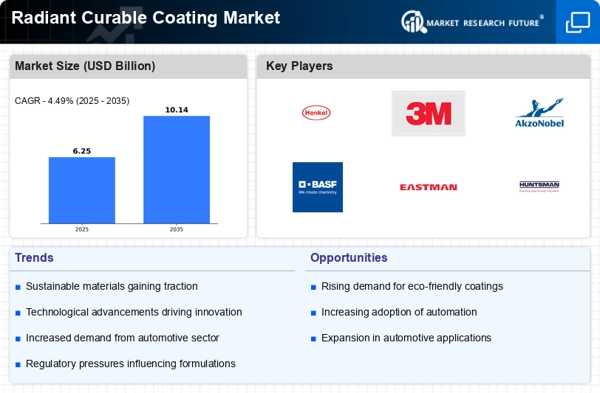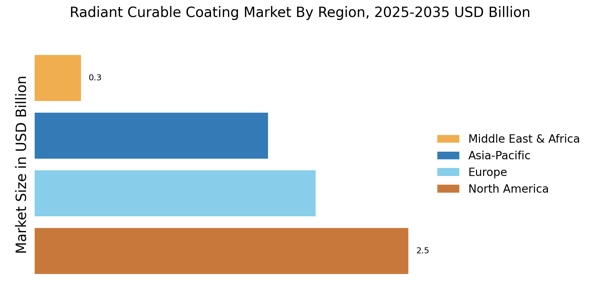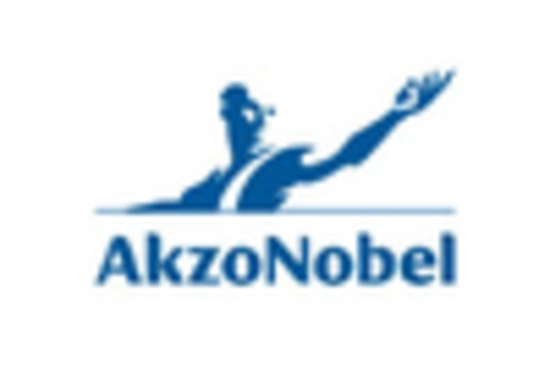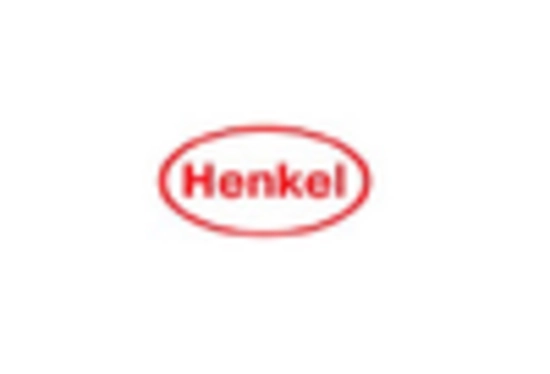Regulatory Compliance
Regulatory compliance is a critical driver in the Radiant Curable Coating Market. Stricter regulations regarding environmental safety and product performance are compelling manufacturers to innovate and adapt their offerings. Compliance with these regulations not only ensures market access but also enhances brand reputation among environmentally conscious consumers. Companies that proactively align their products with regulatory standards are likely to gain a competitive edge. The market is expected to see a shift towards coatings that meet or exceed these regulatory requirements, which may lead to increased investments in research and development. This focus on compliance could result in a market growth rate of approximately 7% over the next few years, as businesses strive to meet evolving standards.
Technological Innovations
Technological advancements play a pivotal role in shaping the Radiant Curable Coating Market. Innovations in curing technologies, such as UV and electron beam curing, enhance the efficiency and performance of coatings. These technologies allow for faster curing times and improved adhesion properties, which are crucial for various applications, including automotive, electronics, and packaging. The market is expected to benefit from ongoing research and development efforts aimed at creating more effective and versatile coatings. Furthermore, the integration of smart technologies, such as sensors and automation, is likely to streamline production processes and improve product quality. As a result, the market is projected to expand, with a potential increase in market size by approximately 10% over the next five years.
Sustainability Initiatives
The increasing emphasis on sustainability within the Radiant Curable Coating Market is driving demand for eco-friendly products. Manufacturers are focusing on developing coatings that are free from volatile organic compounds (VOCs) and other harmful substances. This shift aligns with regulatory pressures and consumer preferences for greener alternatives. As a result, the market is witnessing a rise in the adoption of radiant curable coatings that not only meet performance standards but also contribute to environmental conservation. The market for sustainable coatings is projected to grow significantly, with estimates suggesting a compound annual growth rate (CAGR) of over 5% in the coming years. This trend indicates a robust opportunity for companies that prioritize sustainability in their product offerings.
Growing End-User Industries
The expansion of end-user industries is significantly influencing the Radiant Curable Coating Market. Sectors such as automotive, electronics, and construction are experiencing robust growth, which in turn drives the demand for advanced coating solutions. As these industries evolve, the need for high-performance coatings that offer durability, aesthetic appeal, and environmental compliance becomes paramount. The automotive sector, for instance, is increasingly adopting radiant curable coatings for their ability to provide superior finishes and protection. Market analysts project that the growth in end-user industries could lead to an increase in demand for radiant curable coatings, with estimates suggesting a potential market size increase of 15% by 2027. This trend underscores the interconnectedness of industry growth and coating demand.
Customization and Specialization
The demand for customized solutions within the Radiant Curable Coating Market is on the rise. As industries seek coatings tailored to specific applications, manufacturers are responding by offering specialized formulations. This trend is particularly evident in sectors such as automotive and aerospace, where unique performance characteristics are essential. Customization not only enhances product performance but also allows companies to differentiate themselves in a competitive landscape. The market is witnessing a shift towards more specialized coatings that cater to niche applications, which could lead to an increase in market share for companies that excel in this area. Analysts suggest that the customization segment may account for a significant portion of the market, potentially reaching 30% by 2026.


















Leave a Comment